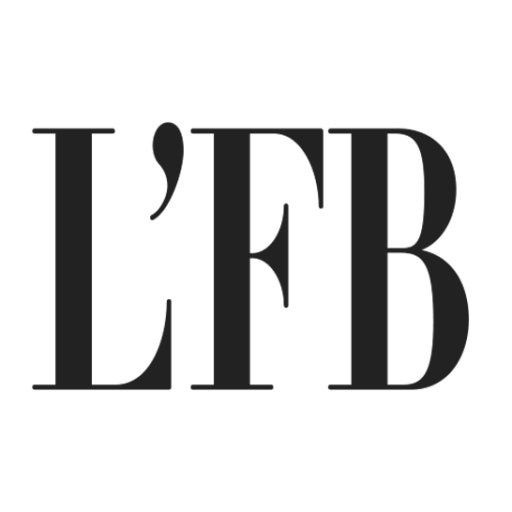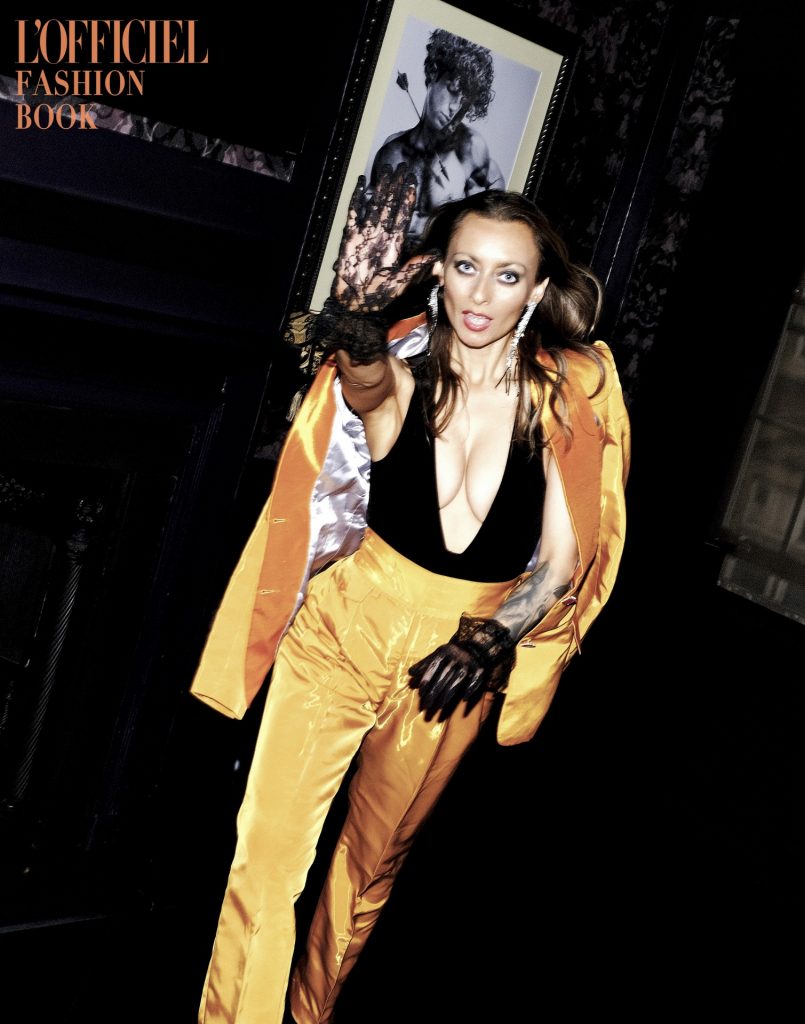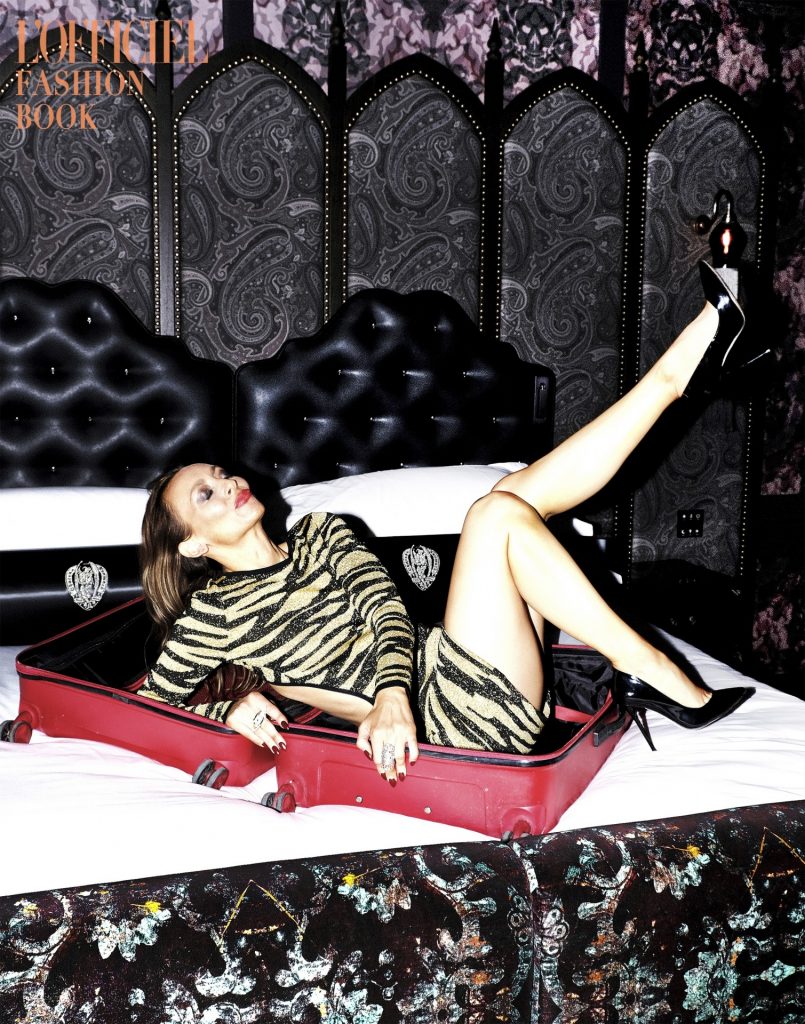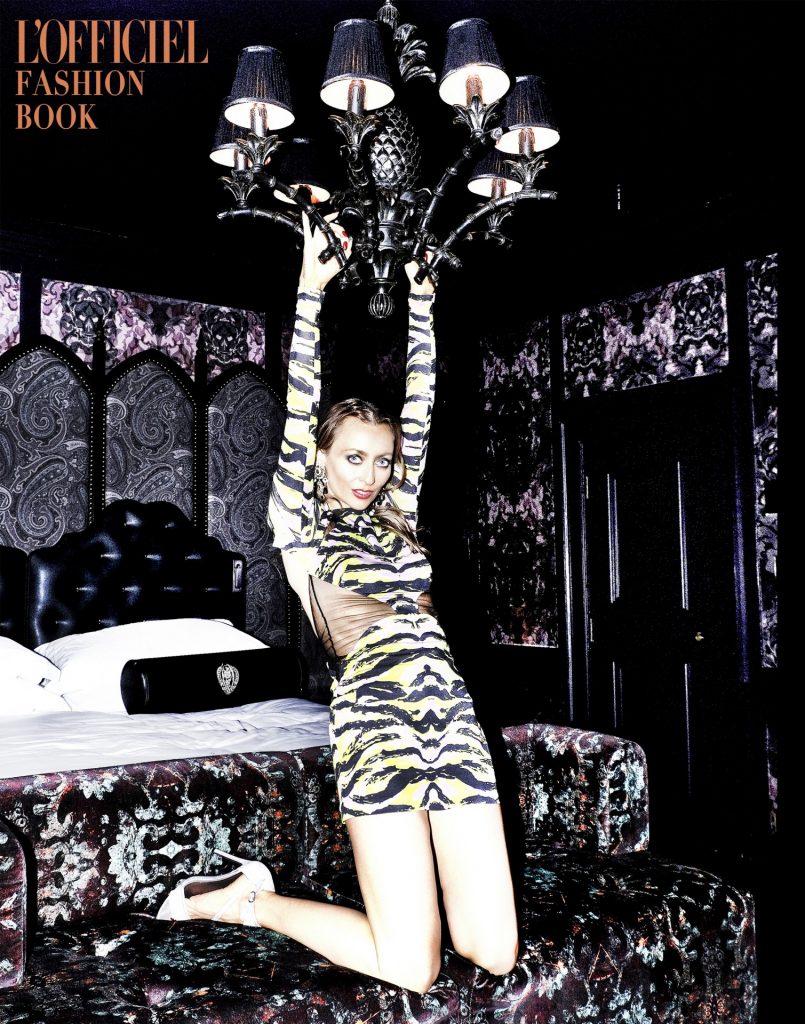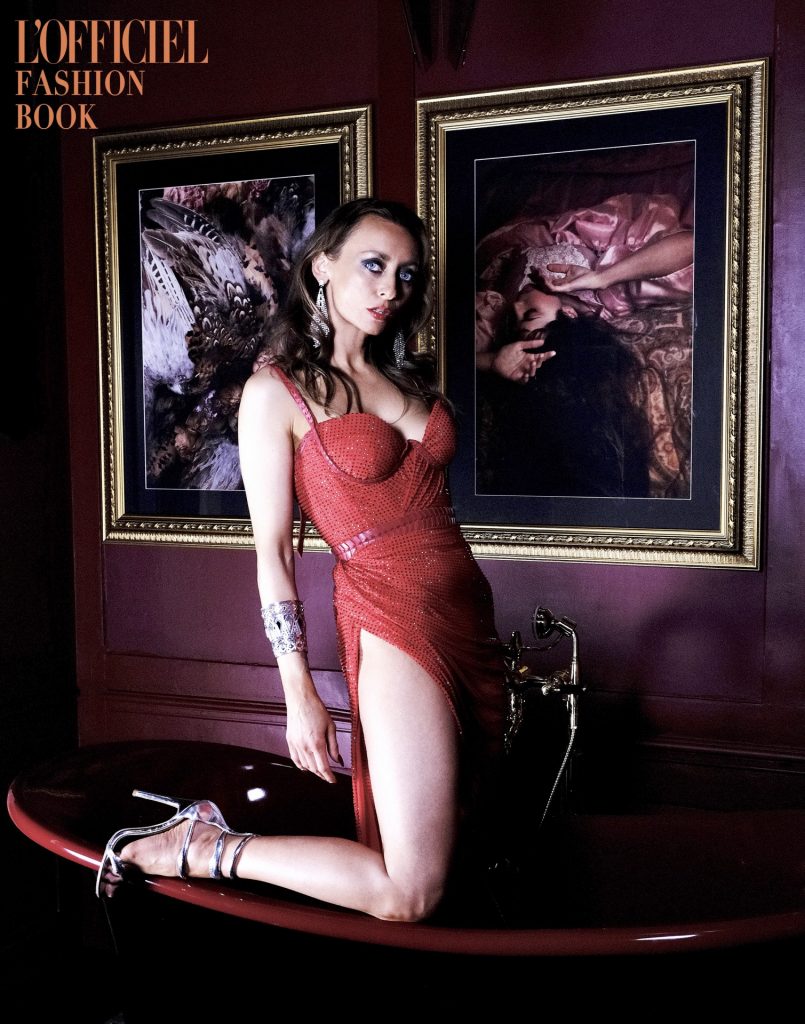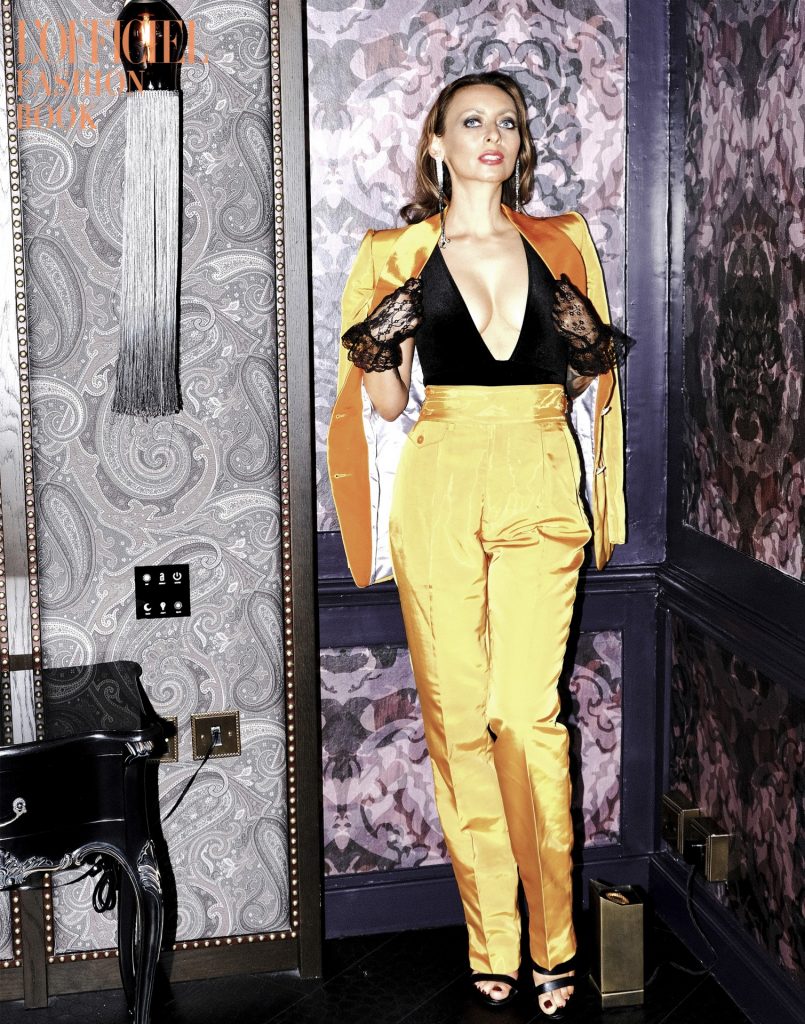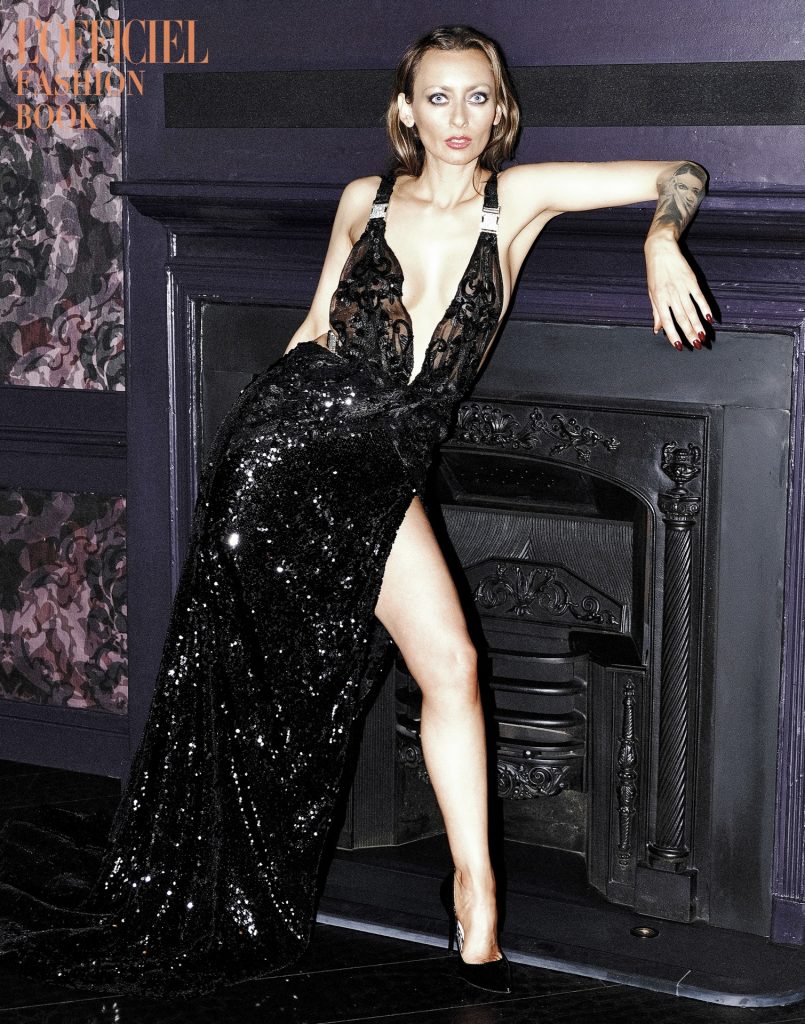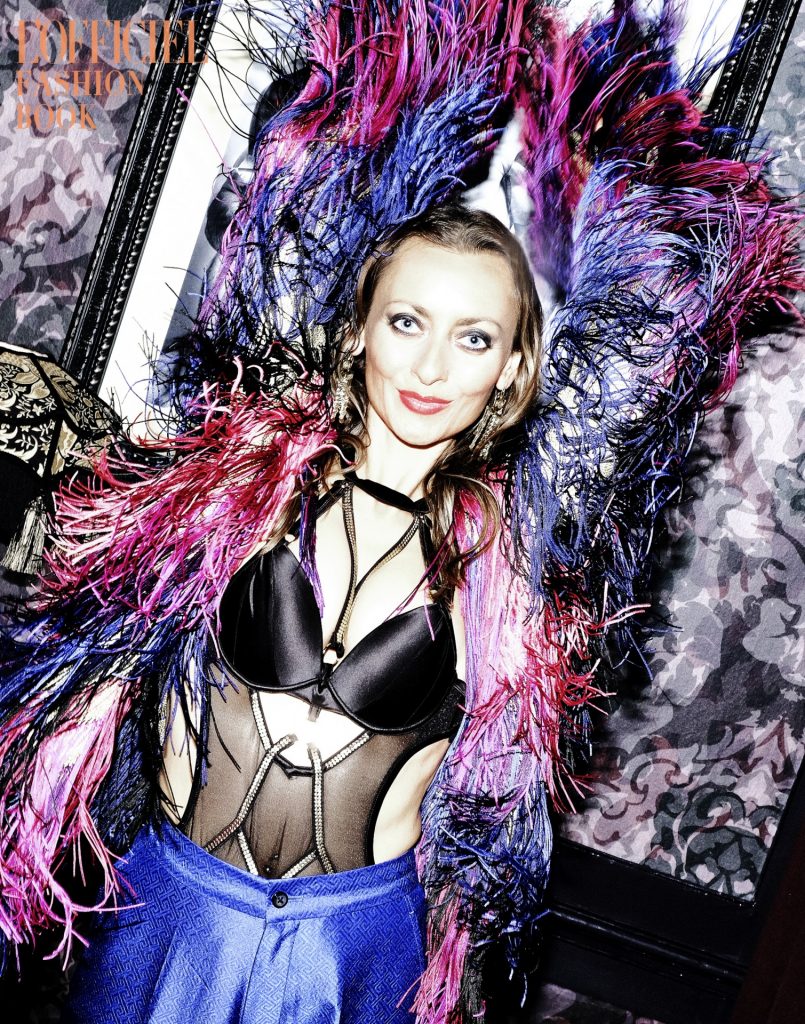KRISTINE KILTY
“CREATIVE DIRECTOR”
Photoshoot / Interview
photoshoot
Editor-in-Chief: Dimitri Vorontsov
Photography: Erica Bergsmeds
Creative Director/Fashion Director: Kristine Kilty
Makeup & Hair: Gemma Howell
Location: Shot exclusively at Chateau Denmark, London
interview
by Dimitri Vorontsov
As an international Creative Fashion Director, we know you spend a lot of time traveling the world to work on photoshoots or to consult for some of the biggest luxury fashion houses. So, where are you off to next?
My first stop is Cannes, for the film festival, which I am very excited about. I am looking forward to attending wonderful fashion and jewellery events, and of course film screenings and parties. I am staying at a beautiful villa with a pool, so it won’t be all work no play. After Cannes, I’m heading to London, for a few shoots that I am creative directing, then I begin preparing for fashion week in Paris. In-between I am squeezing in a couple of business trips abroad, visiting my family in Ireland and I am also in talks about a trip to Africa to make a documentary at a wildlife sanctuary.
You are known for an artistic yet sexy aesthetic that is injected with attitude, with your work predominantly focusing on luxury fashion and haute couture, how did this come about?
As a child growing up in Ireland, I didn’t have a lot of exposure to fashion magazines or luxury boutiques. I saw newspaper updates about the catwalk shows in Paris or sensational moments, such as Madonna wearing the Jean Paul Gaultier cone-bra or Naomi Campbell falling whilst wearing Vivienne Westwood shoes. My point of reference was Thierry Mugler, Karl Lagerfeld at Chanel, Gianni Versace and of course the supermodels. Fashion was dramatic, bold, thrilling, and total escapism from the everyday life that I knew. Childhood memories play a big part in everything that we do as adults, so I guess my early references explain my adoration for luxury fashion and haute couture. I studied Fibre Art, a combination of fine art and textiles, followed by a BA in Textile Design and MA in Fashion Design, both at Central St Martins. I know how to make fabric from scratch – knit, weave, print, embroidery, I have done it all. I also studied pattern cutting so I truly appreciate the skill and artistry that goes into all the incredible haute couture garments that I get to work with now. I am mesmerized by the silhouettes, fabric details, embroideries, and how exquisitely each piece has been finished on the inside. My true love is to delve into research, especially coming up with concepts for a collection and the creative direction/ fashion direction aspects for the photoshoots once the garments have been created. This is where I am strongest and it’s what I have made a career out of. I have been a fashion editor at three magazines, I love to collaborate with other creatives. Things have come full circle since I launched my agency The Fierce Group. I take on projects where I consult with brands on the development of their collections as well as overseeing the image direction once everything has been created. I have just been asked by a brand to take over their design studio for a season and do a guest spot as their Creative Director. These dynamic projects excite me, they take me back to how I started, making art in the studio with my friends. This is where I feel happiest.
Having worked with numerous celebrities from Rock Stars to Royalty, we can see your style plays on both darkness and exuberance. What inspires you and influences your work?
People watching! I enjoy sitting outdoors at a café and looking at style passing by. I try to do this as much as I can. For example, last year I was asked to style the UK promo campaign for Moulin Rouge The Musical. I wanted to bring a modern twist to the characters and to get inspired for Santiago and Toulouse Lautrec, I sat outside a juice bar in Soho (London) and observed what the arty-musician types were wearing. My fashion direction was inspired by cool guys that I saw. I regularly pop into art galleries and attend as many private views as I can. It’s important to look at fashion references, of course, but I like to be inspired by other artistic references too. You never know what can spark an idea. I regularly look to Old Hollywood glamour from the 1930’s and 1940’s. Music and subculture play a huge part in my inspiration and heavily influences my work too. Fashion, music, art – it’s all intertwined and fascinating. Presently, I am listening to a lot of House and looking at images from the early noughties, which is instilling an overall party mood into everything I do. I was glued to MTV as a child, so I’m really into music videos from the late 80’s and 90’s. I listen to a lot of Rock N Roll. In the past I used to style bands, from metal to rock to pop. Now, even if I am doing the fashion direction for a luxury fashion shoot, I still try to infuse it with a little hint of Rock ‘n Roll. Again, I believe this comes down to what I saw as a child. My relative, Phil Lynott was the front man of Thin Lizzy, so I remember my family having his records and seeing photographs in the newspaper. I can be terrible at naming songs or musicians, but I can easily remember what they were wearing.
What is your earliest fashion memory and who was your first style icon?
My first style icon was Mr. T from the A-Team. I got a Mr. T jewellery set for Christmas that came with tons of gold chains, bracelets, clip-on earrings, and rings. Is it any wonder that I am into maximalism, layering and attracted to gold? After Mr. T, I remember being very young and drawing a collection of denim dungarees with rainbow crotches, which were inspired by Jean Paul Gaultier.
You became involved with animal rights activism at a young age, can you tell us how this came about and how does your activism influence your work as a Creative Fashion Director?
I used to visit ENFO, an environmental office in Dublin that had posters, videos and interactive campaigns about bio-diversity and animal rights. In the 80’s there was a big push to pressure the Japanese into ending commercial whaling. I remember all the horrible imagery. I was deeply saddened by it and wanted to make a change. I signed every petition I could get my hands on. By the time I was 10 years old I stopped eating meat and became ‘almost vegan’ before going fully vegan. It was 1992, people thought I was mad and that I would surely end up having a Happy Meal at McDonalds but for me the penny had dropped about what a burger was, and I knew I didn’t want to eat a sentient being. I read about marine biology and signed petitions to ban fur farms. Later in life once I began styling, I never wanted to touch fur or exotic skins. If I am sent a garment with a fur trim, I don’t take it to the shoot and I tell the brand why it was dropped. It can be challenging, especially when working in the luxury fashion and haute couture sphere, as fur can be woven into the garments and not obvious. Or sometimes, when working with different cultures and language barriers, there can be confusion. If in doubt, I don’t shoot it. I have turned down advertising campaigns for exotic skin brands, walking away from a lot of money as I do not want to have any association with the cruelty involved. I have fashion directed campaigns for PETA in the past. One campaign I am proud of is with Rafferty Law, that encouraged people not to shop at Canada Goose, as the coyotes suffer a horrendous death all for a fur trim on the hood. (Canada Goose will stop using fur by the end of 2022). We all have the power to act locally and collectively to make change. I am not afraid to speak out and have conversations with fashion directors at luxury brands or to give feedback to fashion PR’s. Everything gets reported back up the chain and we are starting to see positive changes within luxury fashion, although it’s happening at a slow pace.
We know that you are in favour of plant-based leather and lab grown leather. How are you seeing these materials being utilised, particularly in luxury fashion?
My standpoint remains constant – stop killing animals! Both plant based and lab-grown leather do exactly that. Eradicating animal cruelty from the fashion industry not only saves the lives of animals, but it also means working with materials that are less harmful to the environment. I am very excited by the continued development of plant-based leathers, which can be made from mushroom, pineapple, agricultural waste, apple, fruit leaves etc. Forward thinking designers have already created the textiles, they now need investment so that their industry-changing innovations can be further utilised by the fashion industry. Chanel introduced some Piñatex ® into the collections a few seasons ago and banned fur and exotic skins. I hope that the house continues to innovate and introduce more plant derived leather into the collections. Gucci have created their own vegan leather, Demetra, which has been developed using animal-free raw materials sourced from sustainable, renewable and bio-based sources. Gucci plans to use Demetra for their accessories. With such a revolutionary textile at their fingertips, I hope that they decide to remove leather entirely from their collections. Saying this, I understand when there is a consumer demand for animal leather, fashion houses will continue to use it. This is where I see biotech lab-cultivated leather coming into play. I was elated to read that Kering has just invested in VitroLabs to accelerate the breakthrough solutions that the start-up has been working on for years. VitroLabs can take a harmless biopsy from a cow and make billions of square feet of leather. The cow will continue to live a joyful life in a field and the process doesn’t have a toxic, harmful impact on the planet. The company’s vision is to engineer calf, crocodile, and ostrich leather for use across a range of industries, all while working harmoniously with nature and being slaughter-free. By combining science and creativity, I am hopeful that the luxury fashion brands can make significant eco-friendly and cruelty-free change.
If you could spotlight one brand that combines your love of fashion design and biotechnology, who would it be?
I am always impressed by Stella McCartney’s pioneering vision of merging scientific innovation and fashion design. In 2017, McCartney embarked on a collaboration with Bolt Threads to create Microsilk™. By studying spider silk, they created a durable vegan silk created from yeast, sugar, and DNA. The fabric’s production is a green chemistry practice which supports long-term sustainability and is cruelty free. More recently, again collaborating with Bolt Threads, McCartney has created Mylo™️ a soft, sustainable plant-based leather made from mycelium. It can be grown on a sheet of saw dust in two weeks, therefore making its carbon footprint exceptionally small, particularly when compared with the carbon footprint of animal leather. She uses ECONYL® in her collections, which is regenerated nylon that has been made from carpets, fishing nets collected from the ocean and other waste fabrics. Additionally, McCartney has been working with DuPont to develop KOBA®, a plant-based luxury faux fur product. Not only do I love that the textiles come from a place conscience, but the garment’s design are always so cool too and I feel fantastic when I wear her clothes!
What other cruelty free changes have you observed recently within luxury fashion? What do you think of Fendi’s recent announcement to invest in lab grown fur?
A pivotal moment occurred when the Kering Group declared that ‘fur has no place in luxury’, banning fur from the AW22 collections onwards. When a large luxury group makes a powerful statement like this, others will certainly follow. Valentino announced that they will stop using fur by the end of 2022. They will also stop using angora, joining designers such as Giorgio Armani, Calvin Klein, and Tommy Hilfiger who have already ceased supporting this inhumane practice. These are all steps in the right direction to eradicate animal cruelty from the fashion industry and to work with alternative materials that are less harmful to the environment. I have mixed views on Fendi’s recent announcement. I am delighted that Fendi has invested in creating lab grown fur fibres derived from keratin, the main protein found in hair. I commend Fendi for their passion to create a plastic-free, low impact, bio-based alternative that is luxurious and high quality. What I am disappointed about, is that both Fendi and LVMH Group have no plans to stop using animal fur. Surely, if the house can create lab-grown fibres and design garments from this ethical cruelty-free fur, then there simply is no excuse for Fendi or LVMH Group to continue using real fur. The research is still in the early stages so I hope a fur-free announcement will be made later.
Name a place in the world that brings you joy.
Marrakech, Morocco. It’s a magical place, steeped with history and artistic allure. The sumptuous palaces, the secret gardens, the bustling winding medina, the rooftop restaurants, the colours, the smells. I crave action and inspiration; both are certainly abundant in Marrakech. I can understand why Yves Saint Laurent had such a passion for spending time there. I want to return to Morocco soon, particularly to visit a wonderful charity that I support, called Morocco Animal Aid. They mainly rescue dogs, cats, donkeys, and horses but any animal in need will be helped. They do tremendous work to rescue and rehabilitate animals, most of whom arrive in awful shape needing urgent veterinary care and go on to live wonderful lives at MAA rescue centre or get adopted. I love to visit the charities that I support, it’s heart-warming to see their dedication, love, and compassion first-hand; and it encourages me to do more to help animals.
How did it feel to be photographed by Erica Bergsmeds? Did you enjoy the shoot at Chateau Denmark? What was the inspiration behind it?
I adore working with photographer and film director Erica Bergsmeds. She always comes with the most amazing positive energy. She originally started out as an actress and had huge TV success in Sweden before moving to NYC to pursue her film career and then picked up a camera to shoot actors and supermodels. Erica really knows how to direct you and she gets the shots fast. A few months ago, she took me to an impromptu private party at Chateau Denmark before it had officially opened. I walked through the doors at 4am and inhaled the opulence and evocative grandeur. The interiors truly are a visual feast; with intricate wallpaper, velvet furnishings, gothic nickel chandeliers, and skull-studded headboards on the beds. The room had a private bar (with a butler!) equipped with its own stand-alone bathtub. Instantly embracing that playful rebellious spirit that just seems to wash over you when you enter Chateau Denmark, I immediately jumped in the bathtub and Erica light-heartedly took a photo. This candid snap would become the inspiration for our shoot, we thought it would be fun to return and recreate “That Night at Chateau Denmark”. I embody my work, there is no separation from what I do as a Creative Fashion Director to who I am as a person, so naturally we wanted to depict this. Furthermore, not only does Chateau Denmark have an exquisite aesthetic, but it also very much aligns with my own ethos of being fiercely unapologetic. My whole brand is built around creative rebellion, so I love it when other brands embrace this too. Chateau Denmark is set across 16 buildings all centred around London’s iconic Denmark street. Historically, some of Chateau Denmark’s spaces hugely contributed to the British Rock and Punk music scenes; with The Rolling Stones recording their first album in one of the apartments. Icons such as Vince Taylor, Lou Reed and David Bowie were also frequent faces in the buildings. At a time when central London is being overrun by fast fashion retail units and office spaces, in my view, Chateau Denmark is playing a key role in preserving some of Britain’s music heritage and keeping the spirit of art, bohemia, and creative rebellion alive. And that, in itself, rocks!
